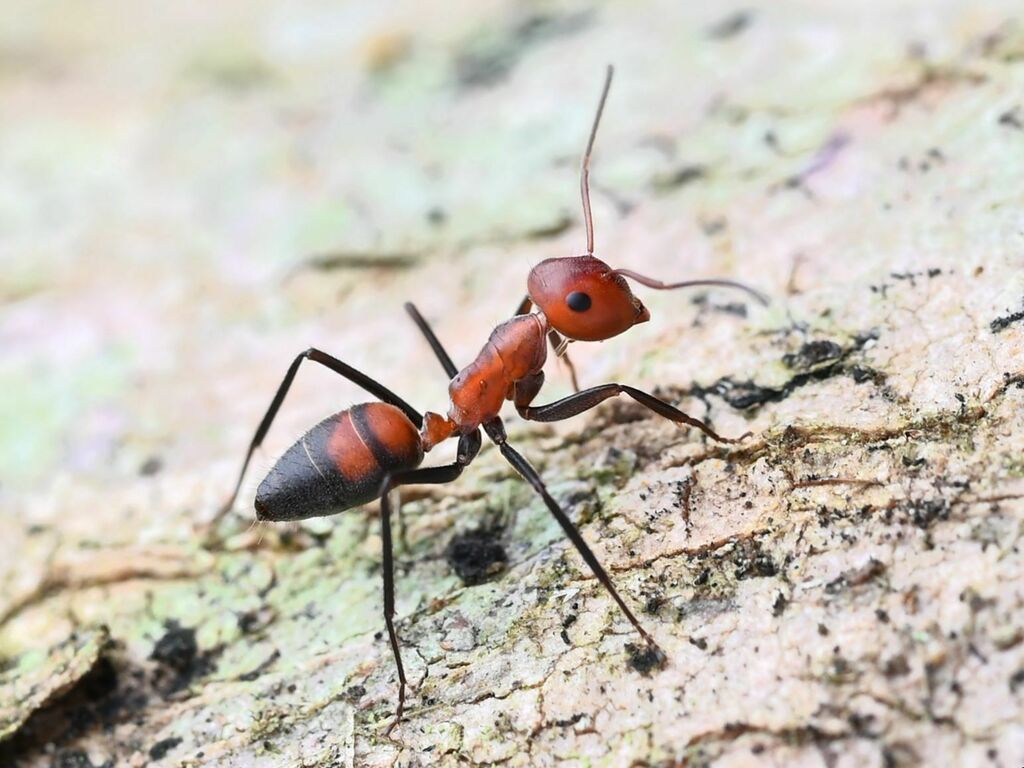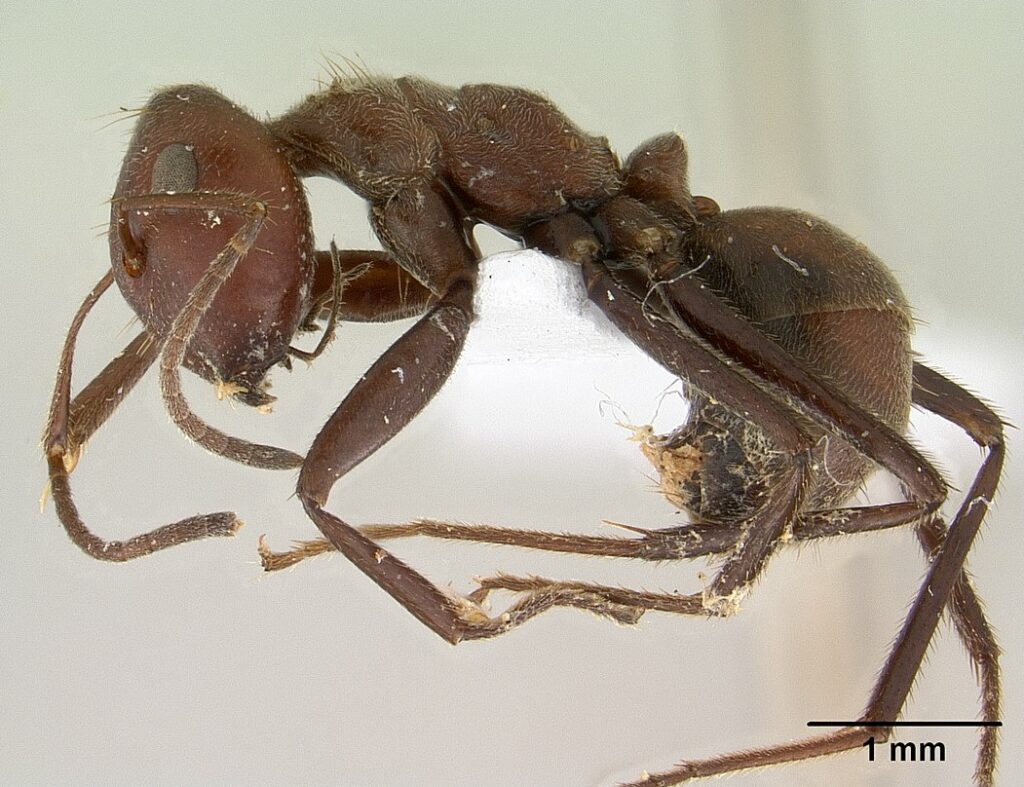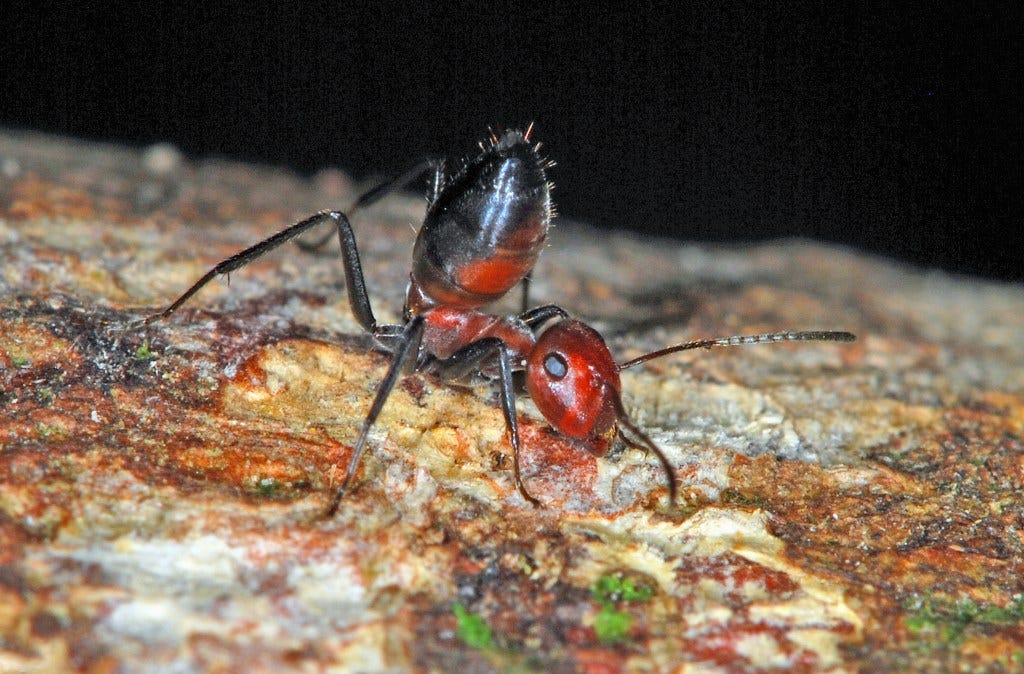Are exploding (or kamikaze) ants real?

Yes, you read that right – exploding and kamikaze ants! But are these creatures real, or just a figment of our collective imagination fueled by sensationalism?
Let’s embark on a journey through the realms of entomology to uncover the truth behind the myth.
Separating Fact from Fiction
At first glance, the notion of exploding or kamikaze ants detonating like miniature bombs may seem too fantastical to be true. After all, we’re accustomed to associating explosions with high-powered explosives and fiery conflagrations, not with tiny insects scurrying about in the underbrush.
Yet, as with many natural marvels, the reality of exploding ants is both stranger and more awe-inspiring than fiction could ever hope to be.
The origins of this myth can be traced back to ancient folklore and indigenous legends, where tales of mystical creatures and fantastical beasts abound. In these stories, ants were often depicted as guardians of hidden treasures or formidable adversaries capable of unleashing unimaginable destruction upon their enemies.
Fast forward to the age of scientific exploration, where intrepid naturalists ventured into the uncharted depths of remote rainforests in search of new species and discoveries. It was here, amidst the lush greenery and cacophony of wildlife, that the truth behind the exploding ant myth began to emerge.
Kamikaze Ants – The Art of Self Explosion
Enter the realm of Southeast Asian rainforests, where the canopy stretches towards the heavens, and the air hums with the symphony of a thousand unseen creatures. Here, amidst the verdant foliage and tangled vines, the Weaver Ants reign supreme, their intricate nests woven with precision and care among the branches of towering trees.
Within this bustling metropolis of ant society, certain species have evolved a remarkable defense mechanism to deter would-be invaders and protect their colonies from harm. Among the most notable are the ants of the genus Colobopsis (explodens and saundersi), renowned for their willingness to sacrifice themselves in the face of danger.
When threatened by predators or rival colonies, these ants do not hesitate to lay down their lives for the greater good. With a swift contraction of their abdominal muscles, they rupture their own bodies (autothysis), unleashing a torrent of sticky, toxic substance that ensnares and incapacitates their foes. It’s a breathtaking display of selflessness and sacrifice, reminiscent of ancient tales of valor and heroism.
But the exploding ants are not alone in their willingness to embrace self-destruction in defense of their colonies. Enter Camponotus saundersi, a species of carpenter ant endemic to Borneo, known for its explosive defense strategy. When threatened, these formidable insects unleash a volatile cocktail of chemicals stored within specialized glands, rupturing their bodies in a spectacular display of biochemical warfare.

How can an ant explode?
At the core of the explosion lies a specialized set of glands nestled deep within the ant’s abdomen, each brimming with a potent concoction of chemicals carefully crafted for one purpose: defense. These glands, known as metapleural glands, serve as reservoirs for a cocktail of compounds including formic acid, alkaloids, and other toxic substances.
When the time comes to unleash their arsenal, the ant must act swiftly and decisively, triggering a chain reaction called autothysis, the rupture of her own body, that culminates in a cataclysmic rupture of its own body.
But what sets the exploding ants apart is not merely the presence of these defensive chemicals, but their ingenious delivery system. Unlike other insects that rely on external weapons or defensive postures, the kamikaze ant’s strategy is entirely internal, relying on the sheer force of its own body to propel its defensive payload towards its target.
When threatened, the ant contracts its abdominal muscles with remarkable precision, exerting pressure on the metapleural glands and causing them to rupture. The resulting explosion propels a stream of toxic fluid towards the aggressor, coating it in a sticky, noxious substance that deters further attacks. It’s a calculated act of self-sacrifice, honed through millions of years of evolution to ensure the survival of the colony.
But the kamikaze ant’s explosive capabilities extend beyond mere defense – they also serve as a means of communication within the colony. By releasing chemical signals through their self-destructive actions, ants can alert their nestmates to imminent threats or signal the need for reinforcements.
It’s a form of chemical semaphore, where each explosion serves as a beacon of warning in the tumult of the rainforest.

Why do ants explode?
To answer this question, we must peer through the lens of evolutionary biology and delve into the complex interplay of ecological pressures and adaptive responses that shape the destiny of species.
For the exploding ants, their explosive tendencies represent a finely tuned adaptation to the unforgiving realities of life in the rainforest, where threats lurk at every turn and survival hinges on split-second decisions.
At its core, the exploding ant’s explosive defense mechanism serves two primary functions: deterrence and protection. When faced with a predator or rival colony, the ant must act swiftly to neutralize the threat and safeguard its home and kin. By sacrificing itself and releasing a barrage of toxic chemicals, the ant not only repels the immediate attacker but also sends a clear message to potential adversaries: approach with caution, for the cost of aggression is steep.
Evolutionary Advantage in Exploding
The evolutionary advantages of the exploding ant’s strategy extend beyond mere deterrence. By sacrificing a few individuals in defense of the colony, the ant ensures the survival of the genetic lineage encoded within its nestmates, thereby perpetuating its own genes through indirect means. In this sense, the act of self-sacrifice serves as a form of genetic altruism, where the interests of the colony take precedence over the individual.
Furthermore, the kamikaze ant’s explosive defense mechanism may confer a competitive advantage in the struggle for resources and territory within the crowded confines of the rainforest. By deterring rival colonies and predators alike, the ant secures access to vital resources such as food and nesting sites, thereby enhancing the fitness and reproductive success of the colony as a whole.
But perhaps the most profound evolutionary advantage of the kamikaze ant’s strategy lies in its adaptability and versatility. Unlike static defenses that rely on fixed structures or behavioral cues, the ant’s explosive capabilities can be deployed in a variety of contexts and against a wide range of threats, from marauding army ants to encroaching humans. It’s a dynamic defense strategy that evolves in lockstep with the ever-changing demands of the environment, ensuring the survival and success of the colony across generations.
So, are exploding ants real? Absolutely! While they may not pack the punch of a Hollywood blockbuster explosion, these remarkable creatures demonstrate the awe-inspiring diversity and ingenuity of the natural world.










